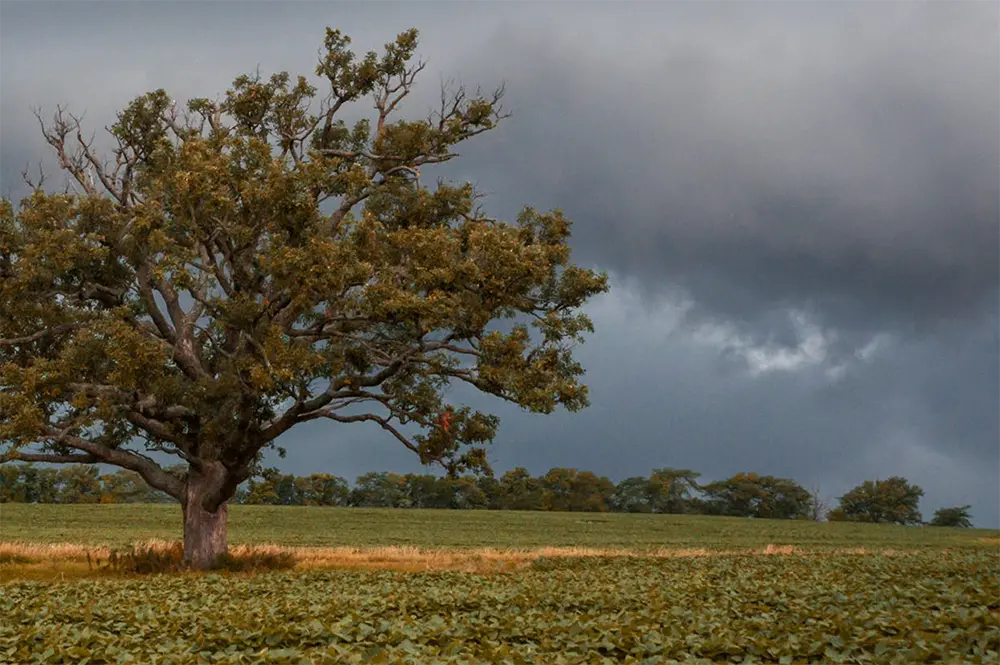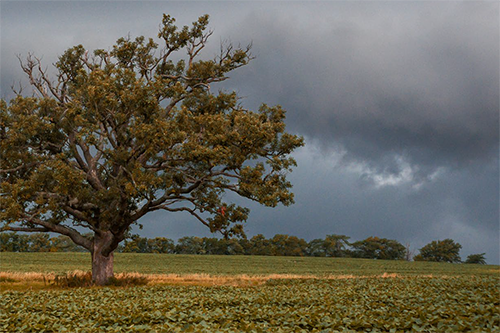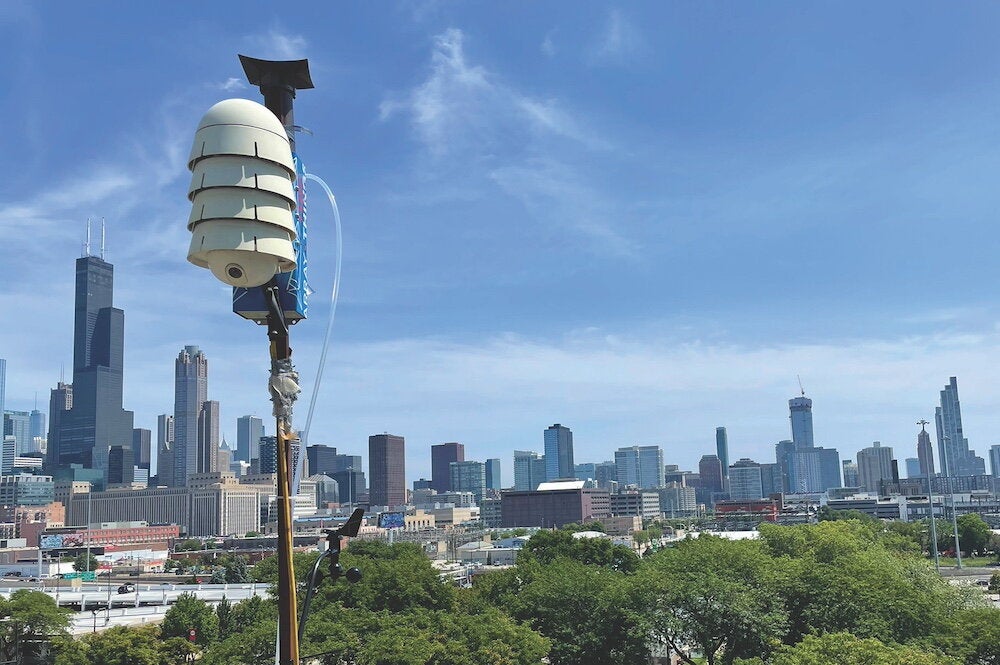

The state of Illinois is undergoing a rapid change in weather patterns that already has started to transform the state, according to a major new scientific assessment by researchers at several universities, government agencies, and organizations, including The Nature Conservancy and the University of Illinois.
The assessment foretells long-term, serious effects on cities and rural communities from climate change that include periods of extreme heat, increased precipitation, and more intense storms, particularly if immediate actions aren’t taken to lessen the threat.
Virtually all aspects of life will be affected, the researchers report, ranging from the health of humans, plants, and animals to farming operations, in a state that is both the nation’s fifth-largest agricultural producer and home to the third-largest city.
The report is unique in that it focuses specifically on local impacts to Illinois, unlike most climate reports targeted at the national or global level. Researchers believe that a more local assessment will help target solutions locally, so they’re more effective. A webinar at noon on Monday, May 17, by the Prairie Research Institute and the Nature Conservancy will explain the report in detail.
“We set out to determine exactly what climate change has in store for the state of Illinois, and we found that important changes are likely to occur in our climate, with major impacts on the people of Illinois,” said Donald J. Wuebbles, professor of atmospheric sciences at the University of Illinois, former White House expert on climate science, and one of the lead authors of the assessment. “These changes will affect all parts of Illinois, including our cities, our agricultural production, our water resources, and even the health of our people and the ecosystems in our state.”
In making the report, some 31 researchers from the University of Illinois joined others from the National Oceanic and Atmospheric Administration, the Centers for Disease Control, the U.S. Forest Service; and other academic institutions, including The University of Edinburgh, University of Illinois at Chicago School of Public Health, North Carolina State University, Northwestern University and Emory University.
The researchers from the University of Illinois came from the College of Liberal Arts & Sciences, the Grainger College of Engineering, the College of Agricultural, Consumer & Environmental Sciences, Illinois Natural History Survey, Illinois State Water Survey, and other units.
Michelle Carr, state director of The Nature Conservancy in Illinois, said that the assessment has revealed how critical the crisis has become.
“Decisive action and policies can still prevent our state from being forever altered, if we act now,” she said.
The researchers found that:
- The average daily temperature has increased by 1-2 degrees Fahrenheit in most areas, and nighttime temperatures have risen about three times the rate of daytime temperatures over the past 120 years.
- Precipitation has increased 5 to 20 percent, varying across the state, and the number of days with at least two inches of rain has increased by 40 percent over the past 120 years.
- By the end of the century, unprecedented warming of 4 to 14 degrees Fahrenheit is likely, depending on the total emissions released into the atmosphere. That warming would be accompanied by large increases in extremely high temperatures, more intense storms and notably higher annual precipitation totals. By the end of the century, total annual precipitation is projected to increase by 2 to 10 percent.
The magnitude of climate change experienced in Illinois will depend on the amount of greenhouse gas emissions emitted globally. The assessment considered two scenarios to assess future climate impacts: 1) a lower scenario, which assumes rapid movement away from fossil fuels, and 2) a higher scenario, where emissions continue to rise throughout the century.
The assessment shows that actions to steeply reduce emissions are critical for averting the worst impacts of climate change.
Other significant findings from the report include:
- Hotter summer temperatures will mean longer, more severe droughts.
- Flooding from streams and rivers has increased and likely will become more common, particularly on the Mississippi and Illinois rivers.
- Intense rains stress aging urban drainage systems, many of which are already prone to flooding and sewage leakage.
- Heat and water stress are likely to reduce corn yields by mid-century, depending on investments made today in agricultural technology and adaptive management, and livestock will face growing threats related to heat, reduced forage quality, and increased disease.
- The risk of severe heat-related illness will increase as extreme heat becomes more frequent.
- An increase in flooding in Illinois will increase the risk of water-borne infectious diseases and mold exposure.
- Climate change will stress Illinois’ remaining natural areas, which are already suffering due to large-scale land conversion and fragmentation.
- Weeds, pests, and diseases are expected to worsen because of warmer winters, increased spring precipitation and higher temperatures.
The assessment also reveals how climate challenges disproportionately affect low-income communities and communities of color, where environmental injustice and economic disparities have left more people vulnerable to health problems such as asthma, owing to higher air pollution rates, less access to parks and open spaces, and more. The findings highlight the importance of understanding the disparate impacts of climate change and developing equitable solutions.
“The challenges we expect Illinois to face from climate change underscore the importance of acting decisively to implement fair, ambitious solutions,” said Karen Petersen, climate change project manager at The Nature Conservancy. “There are so many steps we can take now to both drive down emissions and build resilience to climate change.”
For instance, flooding impacts can be lessened in a variety of ways. Increasing greenspace and decreasing impervious surfaces can help absorb additional water in cities, reducing runoff and flooding. In rural areas, land use planning can identify priority areas for floodplain reconnection and restoration to decrease flood risk.
Information on the impacts specific to Illinois can help local leaders develop just and effective approaches to climate change, ranging from transitioning to a clean energy economy to preparing the state for the impacts of a wetter, warmer climate.
In addition to Wuebbles and Petersen, the report was co-led by James Angel, the Illinois state climatologist for 34 years, and Maria Lemke, director of conservation science at The Nature Conservancy.
For more information or to read the full report, visit the Climate Assessment Report website.


